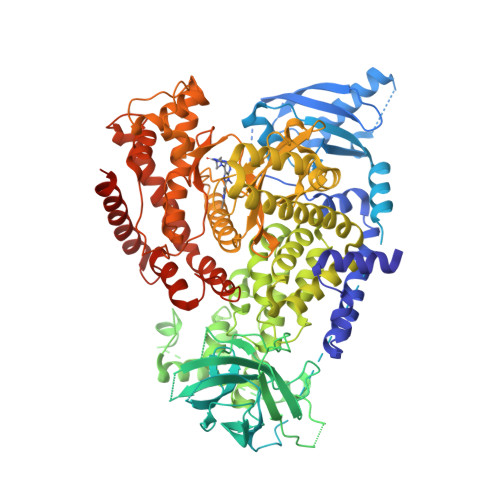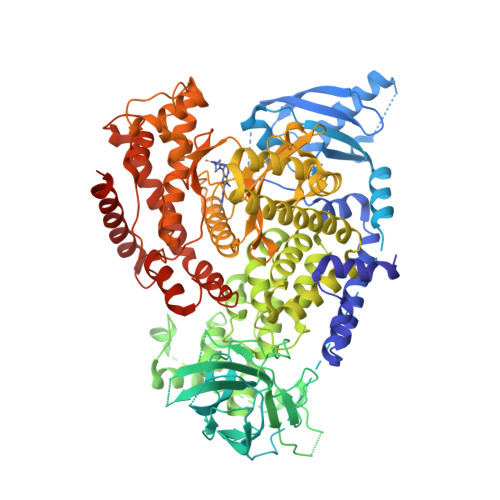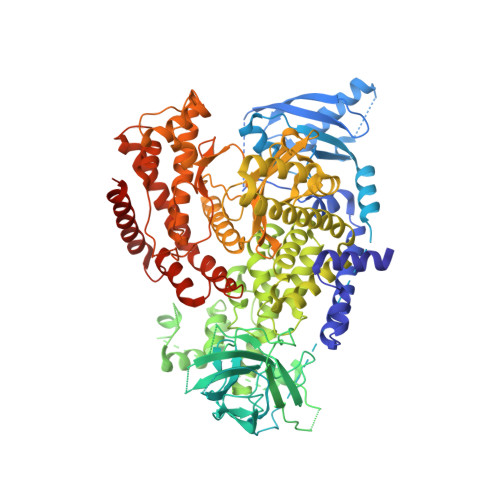Structure Overhaul Affords a Potent Purine PI3K delta Inhibitor with Improved Tolerability.
Methot, J.L., Zhou, H., Kattar, S.D., McGowan, M.A., Wilson, K., Garcia, Y., Deng, Y., Altman, M., Fradera, X., Lesburg, C., Fischmann, T., Li, C., Alves, S., Shah, S., Fernandez, R., Goldenblatt, P., Hill, A., Shaffer, L., Chen, D., Tong, V., McLeod, R.L., Yu, H., Bass, A., Kemper, R., Gatto, N.T., LaFranco-Scheuch, L., Trotter, B.W., Guzi, T., Katz, J.D.(2019) J Med Chem 62: 4370-4382
- PubMed: 30986068
- DOI: https://doi.org/10.1021/acs.jmedchem.8b01818
- Primary Citation of Related Structures:
6MUL, 6MUM - PubMed Abstract:
PI3Kδ catalytic activity is required for immune cell activation, and has been implicated in inflammatory diseases as well as hematological malignancies in which the AKT pathway is overactive. A purine PI3Kδ inhibitor bearing a benzimidazolone-piperidine motif was found to be poorly tolerated in dog, which was attributed to diffuse vascular injury. Several strategies were implemented to mitigate this finding, including reconstruction of the benzimidazolone-piperidine selectivity motif. Structure-based design led to the identification of O- and N-linked heterocycloalkyls, with pyrrolidines being particularly ligand efficient and kinome selective, and having an improved safety pharmacology profile. A representative was advanced into a dog tolerability study where it was found to be well tolerated, with no histopathological evidence of vascular injury.




















